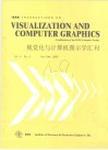版权所有:内蒙古大学图书馆 技术提供:维普资讯• 智图
内蒙古自治区呼和浩特市赛罕区大学西街235号 邮编: 010021

作者机构:Tsinghua Univ Sch Software BNRist Beijing 100084 Peoples R China Microsoft Res Asia Beijing 100080 Peoples R China Cardiff Univ Cardiff CF10 3AT Wales Tsinghua Univ Dept Comp Sci & Technol BNRist Beijing 100084 Peoples R China
出 版 物:《IEEE TRANSACTIONS ON VISUALIZATION AND COMPUTER GRAPHICS》 (IEEE Trans Visual Comput Graphics)
年 卷 期:2022年第28卷第12期
页 面:4980-4994页
核心收录:
学科分类:0808[工学-电气工程] 08[工学] 0835[工学-软件工程]
基 金:National Key R&D Program of China [2020YFB2104100] National Natural Science Foundation of China [U21A20469, 61936002] Institute Guo Qiang THUIBCS BLBCI Tsinghua-Kuaishou Institute of Future Media Data
主 题:Computational modeling Analytical models Visualization Internet Data models Computer architecture Adaptation models Explainable AI visual debugging visual analytics deep NLP model information-based interpretation
摘 要:The rapid development of deep natural language processing (NLP) models for text classification has led to an urgent need for a unified understanding of these models proposed individually. Existing methods cannot meet the need for understanding different models in one framework due to the lack of a unified measure for explaining both low-level (e.g., words) and high-level (e.g., phrases) features. We have developed a visual analysis tool, DeepNLPVis, to enable a unified understanding of NLP models for text classification. The key idea is a mutual information-based measure, which provides quantitative explanations on how each layer of a model maintains the information of input words in a sample. We model the intra- and inter-word information at each layer measuring the importance of a word to the final prediction as well as the relationships between words, such as the formation of phrases. A multi-level visualization, which consists of a corpus-level, a sample-level, and a word-level visualization, supports the analysis from the overall training set to individual samples. Two case studies on classification tasks and comparison between models demonstrate that DeepNLPVis can help users effectively identify potential problems caused by samples and model architectures and then make informed improvements.